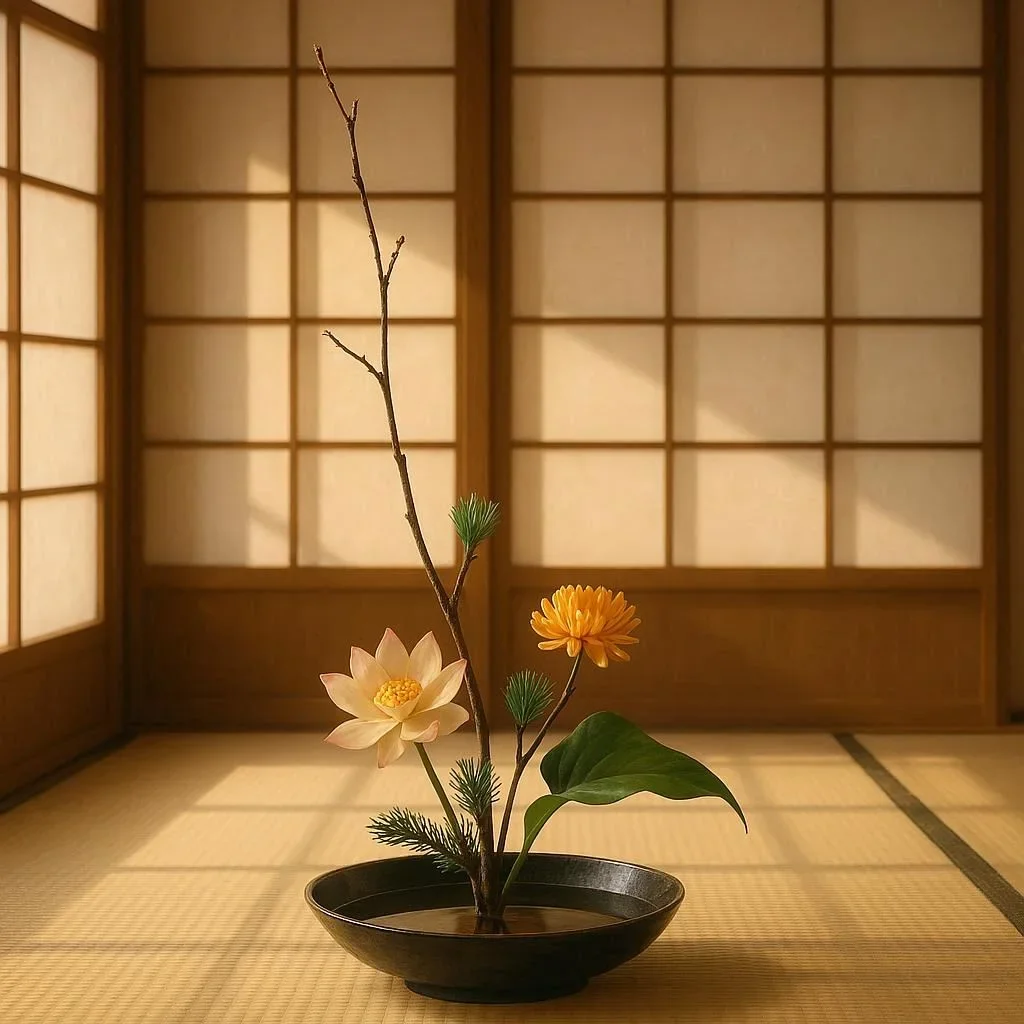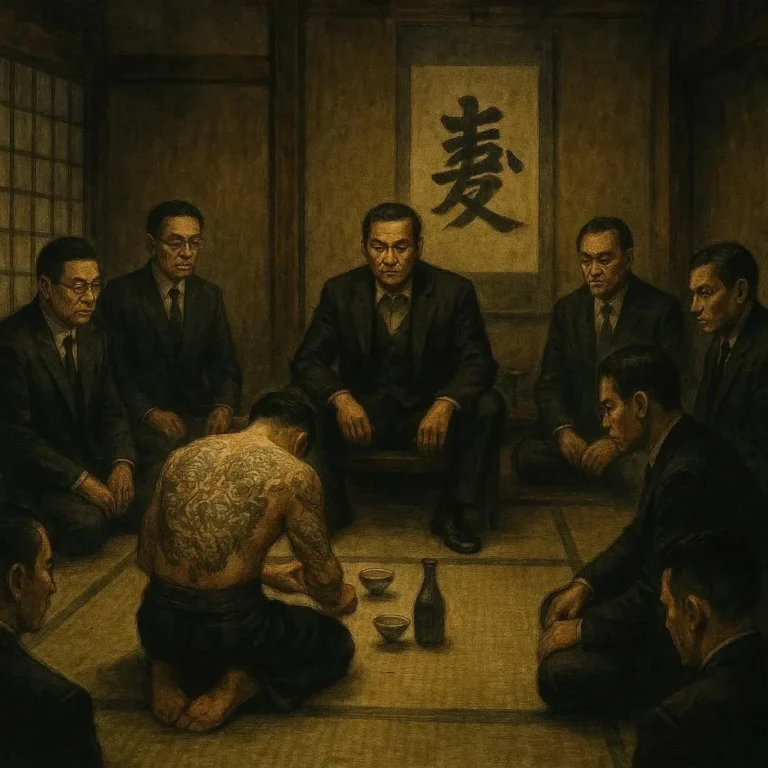509 views The Art of Ikebana: Lessons in Balance and Beauty
Introduction
Ikebana, the Japanese art of flower arrangement, is more than a decorative hobby. It is a disciplined practice that teaches mindfulness, patience, and a deep respect for nature. While Western floristry often emphasizes abundance and colorfulness, Ikebana celebrates restraint, asymmetry, and the subtle interplay of space and scale. In this post, we’ll explore the historical roots of Ikebana, its core principles, and how its lessons on balance and beauty can enrich our everyday lives.
A Brief History: From Ritual to Modern Expression
The origins of Ikebana can be traced back to the 12th century, when Buddhist monks began arranging ritual flowers for memorial services. These early arrangements were modest and symbolic, using simple stems, leaves, and petals to convey spiritual messages.
The 16th and 17th centuries marked a transformation as regional schools—or shinshu—emerged. The most famous is the Ikebana school of Shoka, founded in the 17th century by Sakai Kōsuke. This school introduced the kan-zada system, a hierarchical structure that classified stems, stems with leaves, and leaves as the three pillars of harmony.
Fast forward to the 20th century, and Ikebana adapted to modern contexts. Influential teachers like Shōzō Sawa and Matsue Yoshimi expanded the vocabulary of floral design, incorporating contemporary materials and global plant varieties while preserving the tradition’s philosophical core.
The Four Principles of Ikebana
While the theory can seem opaque, Ikebana boils down to four elemental concepts:
- Harmony (Yō) – The arrangement should feel balanced, not symmetrical. The asymmetrical placement of stems creates a dynamic, living conversation.
- Space (Space) – Empty spaces are just as important as the flowers themselves. The negative space guides the eye and breathes life into the composition.
- Time (Kō) – Ikebana reflects the transient nature of life. Flowers are chosen for their seasonality, and arrangements are often updated to honor passing time.
- Action (Kō) – The act of arranging is a meditative practice. The precise placement of each element reflects the arranger’s intent and mindfulness.
These principles guide novices and masters alike, ensuring that every arrangement feels intentional and serene.
The Key Tools: Three Stems, One Basket, One Bow
d several
In traditional Ikebana, the clarity of a few simple tools becomes a metaphor for the simplicity of life. The three stems—mizu (water), nobori (standing), and fumi (dropping)—each serve a distinct purpose:
- Mizu represents the water source, grounding the arrangement.
- Nobori stands tall, embodying aspiration and calm.
- Fumi drops like a gentle fall, reminding us of impermanence.
These stems, placed within a humble hani (bamboo container), form the backbone of the design. The arrangement does not attempt to mimic a flower in nature; instead, it distills its essence, using line and space to tell a visual story.
Creating Balance: The Dance of Form and Space
Balance in Ikebana is not a fixed rule but a creative tension. Here are three practical ways to achieve it:
- Layering – Place taller stems on one side and shorter stems on the other, creating a sense of gradient. The audience’s eye naturally moves from high to low, producing rhythm.
- Contrast of Textures – Pair a sleek, matte stem with a glossy, rough leaf. The contrasting surfaces create visual interest without overwhelming the viewer.
- Directional Flow – Arrange stems to guide the eye along a deliberate path—say, from left to right. This directional sequencing evokes a story, making the arrangement more engaging.
By mastering these techniques, even a minimalist arrangement feels full and alive.
Beauty Beyond Color: Minimalism, Intent, and Storytelling
Much of Western floristry relies on color saturation and layering. Ikebana, conversely, offers beauty through minimalism and intention. Every cut, every pose of a stem, narrates a fragility that resonates with viewers.
- Color is used sparingly—think of a single bouquet of pale purple oryzae against the stark backdrop of bamboo.
- Shape is cultivated by bending stems into distinct arcs, creating a dynamic line rather than repeating patterns.
- Medium—often water, bamboo, or simple raw materials—directs attention toward the blossoms’ spiritual essence.
When you appreciate this form of beauty, you begin to notice the ordinary as a canvas, thereby discovering calm in the quotidian.
Ikebana in Everyday Life
Beyond the studio, the practice of Ikebana offers tangible benefits:
- Stress Reduction: The meditative focus required to balance stems translates into lower cortisol levels.
- Mindful Presence: By paying attention to each petal’s curve, you train yourself to observe details—useful for both creative fields and daily decision-making.
- Improved Spatial Awareness: Understanding how to manage negative space enhances interior design, architecture, and even digital layout.
Adding an Ikebana-inspired arrangement to your home can transform a simple room into a sanctuary of harmony and purpose.
Modern Adaptations and Global Influence
Ikebana’s influence has crossed cultural boundaries. Designers in France, Brazil, and the United States incorporate its principles into everything from haute couture to product packaging. Innovative architects have adopted its respect for negative space and balance to create sustainable, harmonious buildings.
Recently, the Ikebana Fusion Movement encourages mixing Eastern and Western plants—like pairing Camellia with Daisy—to foster cross-cultural dialogue while maintaining the core aesthetic values.
Conclusion: Embracing Balance, Finding Beauty
The art of Ikebana teaches us that beauty is often born from restraint, presence, and reverence. Whether you’re a seasoned arranger or a curious observer, the lessons on balance and beauty can inform everything from interior design to personal well-being. By practicing mindful arrangement, we honor nature’s transient miracles and carve a path toward deeper appreciation in our everyday lives.
Embrace Ikebana as both an artistic pursuit and a philosophy: a continual conversation with nature, an unfolding of balance, and a quiet celebration of beauty that is as simple as it is profound.





